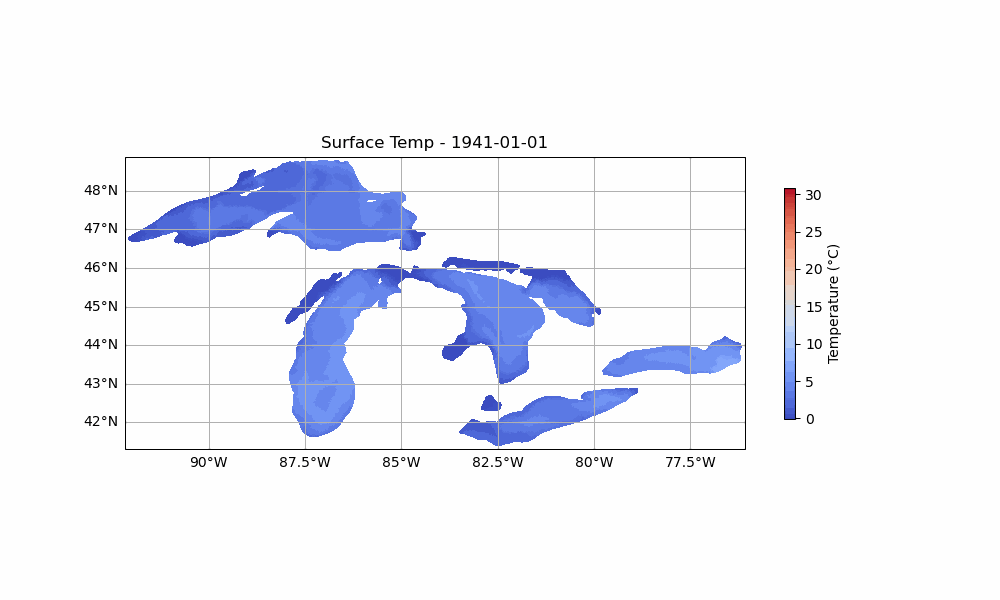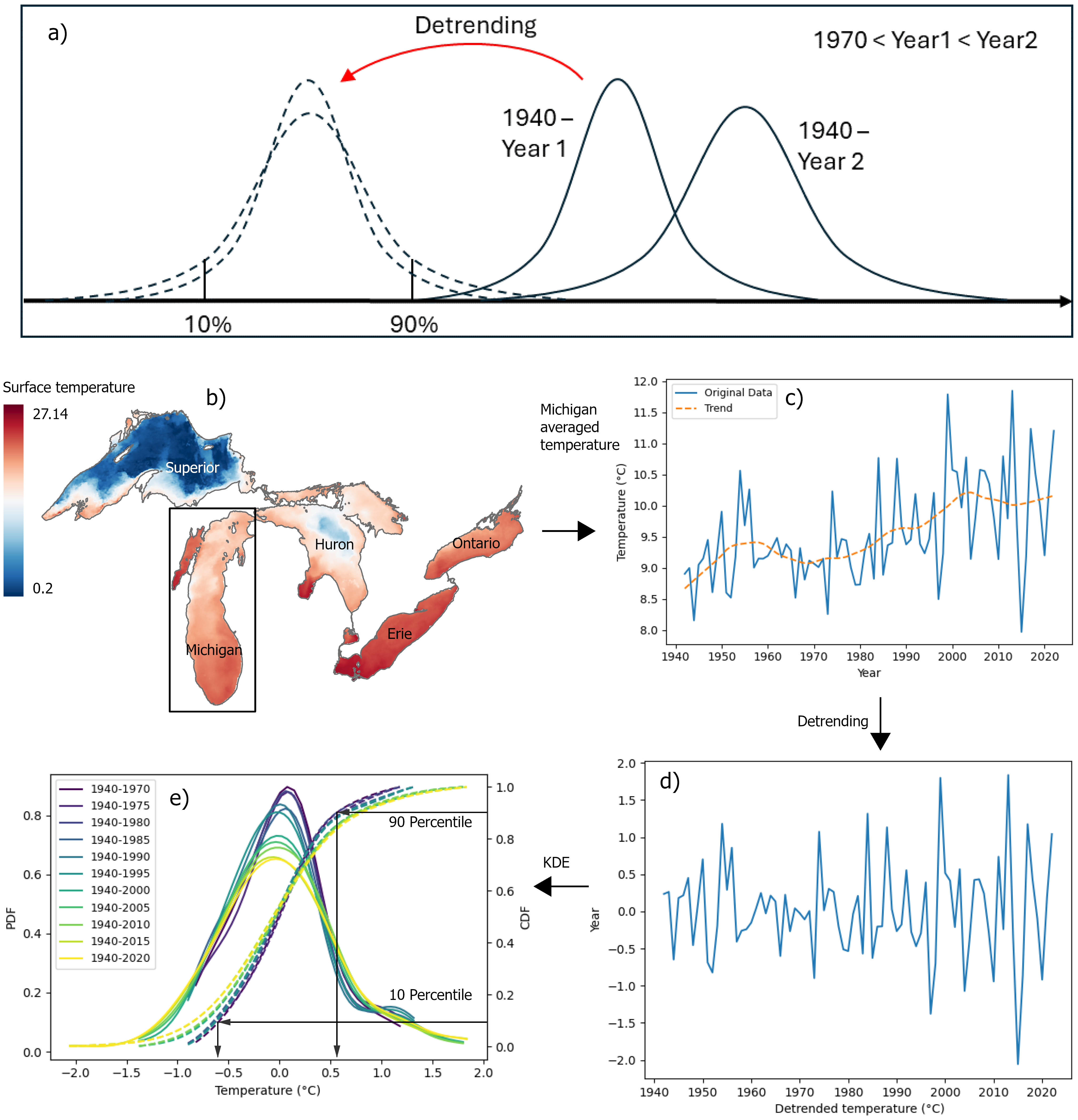Great Lakes hydroclimate extremes variability
Started in 2024
This project focuses on understanding the response of the Great Lakes’ ice cover and thermal structure to past and future climate variability using a physics-based modeling approach. A three-dimensional hydrodynamic-ice model was developed using the Finite Volume Community Ocean Model (FVCOM), configured specifically for the Great Lakes system. The model is forced with the ERA5 reanalysis dataset and is used to simulate lake dynamics at high spatial and temporal resolution. By reconstructing historical conditions, the model enables detailed analysis of extreme events such as lake heatwaves and cold-spells, and the factors that impacts them like air temperature, ice cover anomalies, and lakes characteristics (missing reference). This work provides a physically grounded framework for examining how climate change has shaped, and is likely to continue shaping, the thermal and cryospheric behavior of large lake systems.

